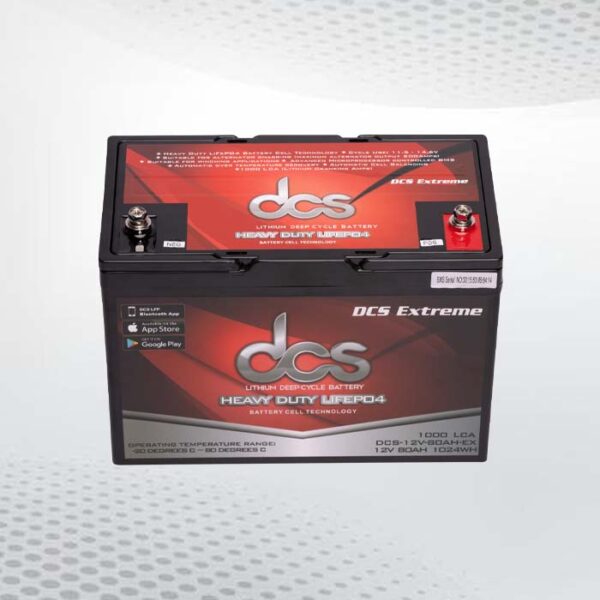The world of battery manufacturing has undergone a significant transformation in recent years, with the rise of polymer batteries leading the charge. These lightweight and efficient batteries have become a staple in many electronic devices, from smartphones to electric cars. However, manufacturing polymer battery is not as simple as it may seem. Several industry secrets go into producing these powerful energy sources. In this blog post, we will break down the top manufacturing secrets of polymer batteries and reveal the inner workings of this cutting-edge technology. So, let’s dive in and uncover the secrets behind these revolutionary batteries.
Understanding Polymer Batteries: Basics and Working Principle
Polymer batteries, also known as lithium-ion polymer batteries, have become a game-changer in energy storage. But what exactly are they, and how do they work?
At their core, polymer batteries are rechargeable energy storage devices that use a combination of lithium ions and a polymer electrolyte to store and release electrical energy. Unlike traditional lithium-ion batteries, which use a liquid electrolyte, polymer batteries use a solid or gel-like electrolyte, making them safer and more flexible.
The working principle of polymer batteries involves the movement of lithium ions between two electrodes – a cathode and an anode – through the polymer electrolyte. Lithium ions move from the cathode to the anode, storing energy during charging. When discharging, the lithium ions move from the anode back to the cathode, releasing the stored energy.
Polymer batteries’ unique structure and chemistry allow higher energy density, faster charging, and longer cycle life than other battery types. These qualities have made them the go-to for many portable electronic devices and electric vehicles.
An Inside Look at the Polymer Battery Manufacturing Process
Polymer battery manufacturing is a complex and fascinating process that combines advanced technologies and meticulous attention to detail. To get an inside look at how these revolutionary batteries are made, we’ll dive into the key steps involved in their production.
First, the manufacturing process starts with the preparation of the electrodes. Thin layers of active materials, such as lithium cobalt oxide for the cathode and graphite for the anode, are applied onto conductive foils. These electrodes are then carefully coated with a polymer electrolyte to ensure the movement of lithium ions.
Next, the electrodes are stacked with a separator to prevent short circuits. Depending on the battery design, this stack is then placed into a pouch or canister. The pouch or canister is sealed to ensure the battery’s safety and prevent leakage.
Once assembled, the battery undergoes a series of quality control tests to ensure its performance and reliability. These tests include checking the battery’s voltage, capacity, and internal resistance.
Finally, the fully assembled batteries are subjected to rigorous testing to ensure they meet the highest standards. This includes testing their durability, performance under different temperature conditions, and safety features such as overcharge and discharge protection.
Throughout the manufacturing process, manufacturers employ advanced techniques and technologies to optimize the performance, safety, and efficiency of polymer batteries. These techniques include precise coating methods, advanced electrode materials, and innovative manufacturing equipment.
Revealing the Secrets: Innovative Techniques in Polymer Battery Production
When it comes to polymer battery production, manufacturers employ several innovative techniques to create these advanced energy storage devices. One such technique is precise coating methods, which ensure the uniform application of active materials onto the electrodes. This allows for optimized performance and enhanced energy density.
Advanced electrode materials also play a crucial role in the manufacturing process. Manufacturers can create polymer batteries that offer faster charging times and longer cycle life by using high conductivity and stability materials. These materials are continuously being researched and developed to further improve the efficiency and performance of polymer batteries.
Innovative manufacturing equipment is another key factor in polymer battery production. Manufacturers invest in state-of-the-art machinery that enables precise assembly, sealing, and testing of the batteries. This ensures that each battery meets the highest standards of quality and safety.
Challenges in Polymer Battery Manufacturing and How They’re Overcome
Manufacturing polymer batteries comes with its fair share of challenges, but innovative solutions have been developed to overcome them. One of the main challenges is ensuring the uniform coating of active materials onto the electrodes. Any inconsistency in the coating can result in decreased battery performance and efficiency. To address this, manufacturers have implemented precise coating methods that use advanced techniques to evenly apply the active materials. This ensures optimized performance and enhanced energy density.
Another challenge is the development of advanced electrode materials that offer high conductivity and stability. This is crucial for faster charging times and longer cycle life. To overcome this challenge, researchers are constantly exploring new materials and formulations to improve the efficiency and performance of polymer batteries.
Furthermore, maintaining the quality and safety of polymer batteries throughout the manufacturing process is paramount. To tackle this challenge, manufacturers invest in state-of-the-art machinery that enables precise assembly, sealing, and testing of the batteries. This ensures that each battery meets the highest standards and guarantees reliability and durability.
Future Trends and Advancements in Polymer Battery Technology
As technology advances rapidly, so does the field of polymer battery technology. Researchers and manufacturers are constantly pushing the boundaries to enhance polymer batteries’ efficiency, performance, and durability. The future of polymer battery technology holds exciting possibilities and potential advancements.
One of the key areas of focus for future advancements is increasing energy density. By packing more energy into smaller batteries, we can enjoy longer battery life in our devices and reduce the overall size and weight of batteries. This opens up possibilities for even more compact and portable electronic devices.
Another important trend in polymer battery technology is the development of fast-charging capabilities. With the increasing demand for quick and convenient charging, researchers are working on technologies that allow polymer batteries to charge incredibly fast without compromising safety or durability.
Additionally, battery manufacturing has a growing emphasis on sustainability and environmental friendliness. Future advancements may focus on using more eco-friendly materials, improving the recyclability of batteries, and reducing the environmental impact of the manufacturing process.
Enhancing Efficiency and Durability of Polymer Battery Production
To keep up with the ever-increasing demand for polymer batteries, manufacturers are constantly seeking ways to enhance the efficiency and durability of the production process. One key aspect of this is optimizing the manufacturing equipment and techniques used. Manufacturers can streamline the production process, increase productivity, and minimize waste by investing in state-of-the-art machinery. This leads to cost savings and ensures that each battery meets the highest quality standards.
Another area of focus for enhancing efficiency and durability is the development of advanced materials. Researchers constantly explore new materials and formulations with improved conductivity, stability, and longevity. These materials improve the performance of polymer batteries and make them more durable and reliable in various conditions.
Additionally, process optimization plays a crucial role in enhancing efficiency. By fine-tuning each manufacturing process step, manufacturers can reduce production time, minimize errors, and maximize output. This results in a more efficient and cost-effective production line.
Maximizing Efficiency in Polymer Battery Production
Maximizing efficiency in polymer battery production is crucial for manufacturers to keep up with the ever-growing demand for these advanced energy storage devices. To achieve this, manufacturers employ a variety of strategies and techniques.
One key aspect of maximizing efficiency is optimizing the manufacturing equipment and techniques. Manufacturers can streamline the production process, increase productivity, and minimize waste by investing in state-of-the-art machinery. This leads to cost savings and ensures that each battery meets the highest quality standards.
Process optimization is another important factor in maximizing efficiency. By fine-tuning each manufacturing process step, manufacturers can reduce production time, minimize errors, and maximize output. This results in a more efficient and cost-effective production line.
Additionally, developing advanced materials plays a crucial role in maximizing efficiency. Researchers constantly explore new materials and formulations with improved conductivity, stability, and longevity. These materials improve the performance of polymer batteries and make them more durable and reliable in various conditions.
FAQs
Have questions about polymer battery manufacturing? We’ve got you covered! Here are some frequently asked questions to help you understand this fascinating process.
Q: How long does it take to manufacture a polymer battery?
A: The time it takes to manufacture a polymer battery can vary depending on various factors, such as the size and complexity of the battery. On average, it can take several hours to complete the manufacturing process.
Q: Are polymer batteries safe?
A: Yes, polymer batteries are safer than traditional lithium-ion batteries. Solid or gel-like electrolytes reduce the risk of leakage and thermal runaway, making them more stable and less prone to overheating.
Q: Can polymer batteries be recycled?
A: Yes, polymer batteries can be recycled. The recycling process involves separating the different components of the battery and then reusing or repurposing them. Recycling helps reduce environmental impact and conserves valuable resources.
Conclusion
In this blog post, we’ve explored the fascinating world of polymer battery manufacturing and uncovered some of the industry’s top secrets. From the basics and working principle of polymer batteries to the intricate manufacturing process, we’ve delved into the inner workings of these powerful energy storage devices. We’ve also discussed the innovative techniques, challenges, and future trends in polymer battery technology.
















